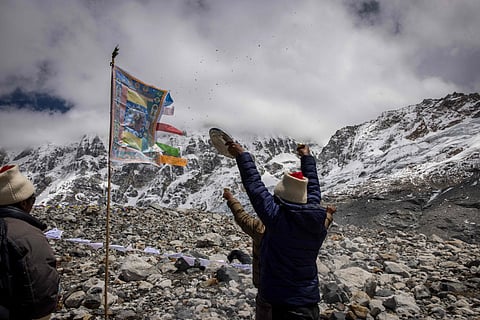Nepal holds tribute for disappearing glacier
Experts warn that if warming trends continue, Yala could vanish entirely by the 2040s

Dozens of people gathered at Nepal’s Yala glacier on Monday for a solemn ceremony marking its rapid retreat due to climate change. Located in the Langtang Valley at elevations between 5,170 and 5,750 metres, the glacier has lost 66% of its area and retreated 784 meters since 1974, according to the International Centre for Integrated Mountain Development (ICIMOD).
Experts warn that if warming trends continue, Yala could vanish entirely by the 2040s. Cryosphere specialist Sharad Prasad Joshi, who has studied the glacier for 40 years, noted that it has already halved in size during his career.
Buddhist monks performed rituals as prayer flags fluttered against the Himalayan backdrop. Two granite plaques bearing memorial messages, including one by Icelandic writer Andri Snaer Magnason, were unveiled—echoing global “glacier funerals” held in Iceland, Mexico, the U.S., and Switzerland.
The ceremony coincided with the EU’s report that April 2025 was the second-hottest on record, with nearly all of the past 22 months exceeding 1.5°C above pre-industrial levels—the threshold outlined in the Paris Agreement.
Yala is one of seven glaciers in the Hindu Kush Himalayas, and it has been monitored annually for over a decade. Glaciers in the region are a crucial freshwater source for nearly two billion people, yet they are melting faster than ever. Recent UN data showed a net loss of 450 billion tonnes of glacier mass globally in 2024 alone.
“This is about more than just one glacier,” said Maheshwar Dhakal of Nepal’s climate change division. “We are on the frontlines of the climate crisis. Glacier loss is irreversible on human timescales. The time to act is now.”
Sign up for the Daily Briefing
Get the latest news and updates straight to your inbox



